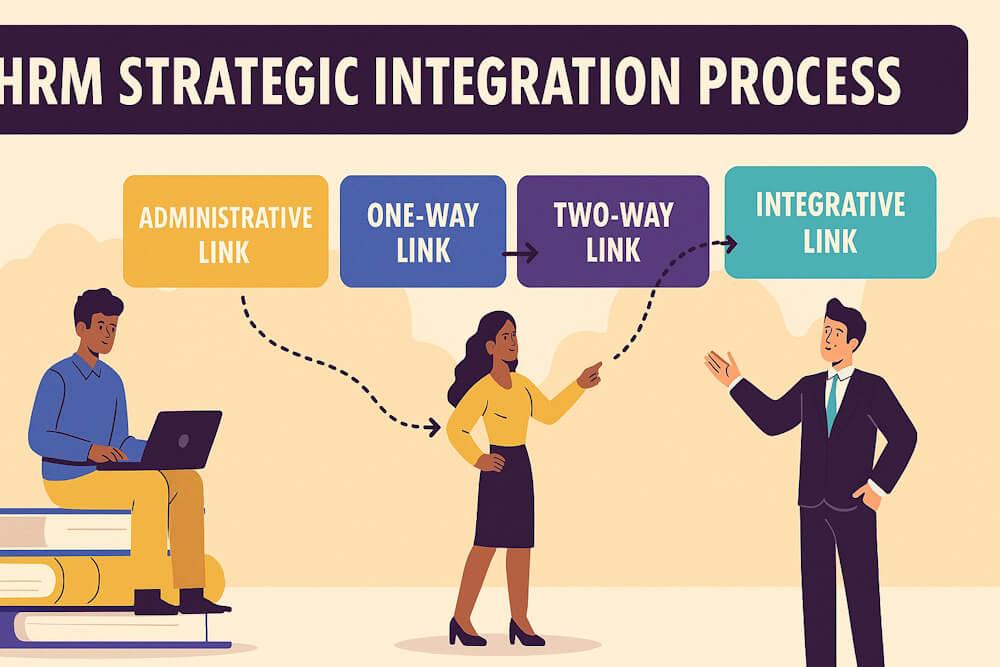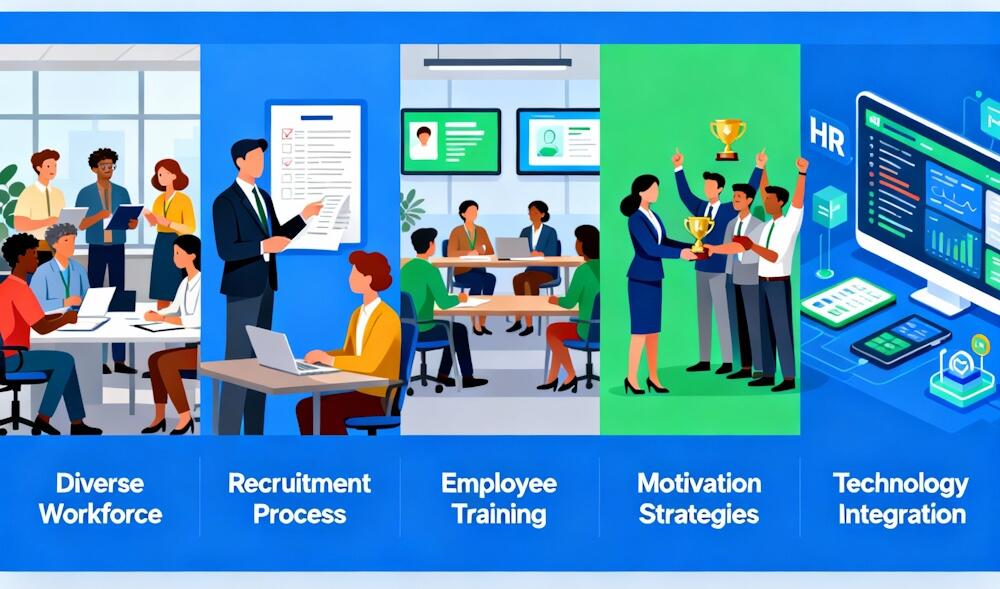In today’s fast-changing business world, companies face intense competition, global expansion, and rapid technological change. To stay ahead, businesses need more than just a standard HR team—they need Strategic Human Resource Management (SHRM). This approach aligns human capital with long-term business goals, helping companies perform better, grow faster, and remain competitive.
In this blog, we’ll explore the main objectives of SHRM and illustrate how these goals apply in the real world using an industry example.
What Is Strategic Human Resource Management (SHRM)?
SHRM is a future-focused approach to managing people in a way that directly supports the company’s long-term goals. Unlike traditional HRM, which focuses on day-to-day operations like hiring and payroll, SHRM is more strategic. It connects workforce planning with the organization’s overall vision, ensuring people and processes work together to drive success.
Simply put, SHRM = HRM + Business Strategy.
Why Is SHRM Important?
- Aligns employee efforts with business goals
- Builds a stronger organizational culture
- Enhances employee productivity and satisfaction
- Helps businesses adapt to market changes
- Attracts and retains top talent
Main Objectives of SHRM
Here are the key goals of SHRM, explained in simple terms:
1. Manpower Planning for Local and Global Needs
SHRM ensures that the company has the right number of employees with the right skills—whether operating locally or globally. This includes anticipating future hiring needs and planning accordingly.
Example: A tech company expanding to Europe may use SHRM to identify talent needs for the new market and build local recruitment strategies.
2. Scientific Hiring and Placement
It’s not just about filling roles—it’s about placing the right people in the right jobs. SHRM uses data-driven methods for recruitment, selection, and onboarding.
Example: Using psychometric tests and AI tools to match candidates to roles based on skill, cultural fit, and potential.
3. Employee Training and Development
SHRM ensures employees are constantly learning and adapting. This includes technical training, soft skills, and leadership development.
Example: An automotive firm retrains assembly-line workers to use robotics and automation tools.
4. Job Matching Based on Expertise
Employees should be placed in roles where they can succeed. SHRM helps identify individuals’ strengths and aligns them with job duties.
Example: A marketing specialist with graphic design skills might be moved to a digital content creation role for better output.
5. Rewarding Talent Objectively
Deserving employees should get promotions and recognition based on performance—not favoritism.
Example: A transparent performance appraisal system based on KPIs encourages fairness and motivation.
6. Performance-Based Compensation
Pay should reflect the employee’s skill, effort, and contribution. SHRM ties compensation to results.
Example: Sales teams receive bonuses based on hitting quarterly revenue targets.
7. Enhancing Motivation and Cooperation
SHRM focuses on creating a work environment that encourages teamwork, employee satisfaction, and loyalty.
Example: Offering employee wellness programs and open-door communication policies.
8. Promoting Industrial Harmony
Reducing conflicts between management and employees helps maintain a peaceful, productive workplace.
Example: A manufacturing company working closely with labor unions to avoid strikes and grievances.
9. Recognition of Effort
Employees who show dedication and produce results deserve acknowledgment.
Example: “Employee of the Month” programs or spot bonuses for exceptional performance.
10. Driving Organizational Performance
SHRM plays a direct role in improving overall business efficiency by maximizing human potential.
Example: A retail chain improves customer satisfaction scores by investing in employee service training.
11. Contributing to Business Growth and Reputation
With effective HR strategies, companies can grow profitably and build a strong brand.
Example: Google is known not just for innovation, but also for being a top employer.
12. Staying Competitive in the Global Market
SHRM helps businesses remain agile and efficient in a global economy by aligning HR strategies with competitive business goals.
Example: A startup using SHRM to attract global remote talent while scaling operations internationally.
Strategic HR Models within SHRM
These three models are commonly used to support SHRM objectives:
1. Resource-Based View (RBV)
Focuses on using internal strengths (like employee talent) to gain a competitive edge.
Example: A software company develops in-house talent to avoid dependency on outsourcing.
2. High Commitment Management
Aims to build trust and long-term relationships between employees and managers.
Example: Employees are involved in decision-making processes to boost morale and ownership.
3. High-Involvement Management
Encourages employee participation at all levels to improve productivity and innovation.
Example: Cross-functional teams that allow employees to contribute ideas beyond their roles.
4. High-Performance Management
Focuses on increasing business performance by building a highly skilled, motivated workforce.
Example: Setting stretch goals and aligning performance rewards with company growth.
Achieving Strategic Fit
The core idea of SHRM is “strategic fit”—making sure your workforce, business goals, and HR strategy are all working in harmony.
Example: A fashion brand’s SHRM strategy might align its hiring, training, and incentives with seasonal demand and brand values.
Industry Example: Amazon
Amazon is a strong example of SHRM in action. Here's how:
- Global manpower planning supports warehouse and delivery operations in different countries.
- Data-driven hiring through assessment tools and AI recruitment platforms.
- Training programs to upskill workers in logistics, cloud computing, and customer service.
- Performance-based pay and rewards for warehouse staff and tech teams.
- Workplace harmony initiatives like health benefits, stock options, and development programs.
- Strategic HR fit by aligning HR policies with Amazon’s core principle: customer obsession and operational efficiency.
Conclusion
SHRM is more than managing people—it’s about aligning human resources with business success. From hiring and training to performance and recognition, every step is planned with long-term goals in mind.
Understanding and applying the objectives of SHRM ensures that companies are not only staffed properly but also empowered to innovate, compete, and grow in today’s complex business world.








